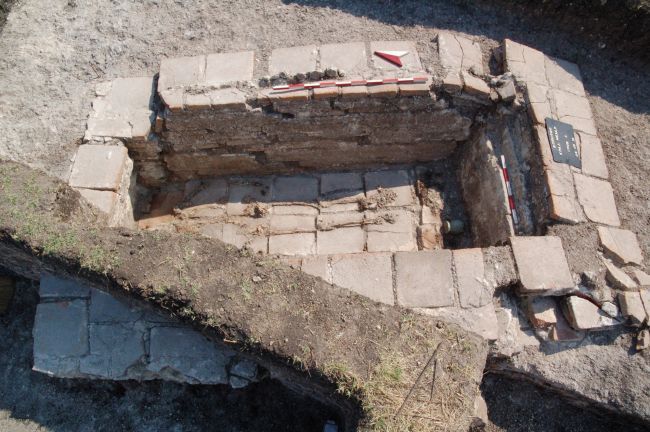Jar Depicting Thracian Athlete Found in Grave of Sports Fan of Antiquity
Your move, fanatics of the 21st century
/https://tf-cmsv2-smithsonianmag-media.s3.amazonaws.com/filer/06/6b/066b71d5-28a9-4a4e-bb2c-6a7c791cd05a/qez5kmmjb9yvs6uzaw89he-650-80.jpg)
Around 1,800 years ago, an artisan immortalized a Thracian athlete in brass, preserving what appears to be a wrestler’s likeness in the form of a balsamarium, or vessel used to store liquids including oils, balm and perfumes. Several decades later, the jar was buried alongside the remains of a 35- to 40-year-old man in what is now southeastern Bulgaria.
A new study published in the American Journal of Archaeology discusses this “spectacular” artifact in great detail, providing insights on the balsamarium’s origins, subject and place within the wider Thracian culture. (Thrace, an ancient region comprising parts of Greece, Bulgaria and Turkey, was under Roman control at the time of the jar’s production.)
As the authors explain, “By providing a detailed description of the balsamarium, the results of its metallographic analysis, and an accurate account of its archaeological context and its date, we hope to clarify some still unsolved problems related to the function and production of such vessels.”
Per Live Science’s Owen Jarus, the ancient jar depicts a goateed man with a bent nose likely broken during a wrestling match and never fully healed. The unidentified athlete boasts a tight-fitting cap made from the skin of a panther or leopard: Its nostrils and half-closed eyes appear on the front side of the accessory, while its sharp teeth, ears, spotted coat and mane are represented by skillfully rendered brasswork details.

According to the study, the cap alludes to Hercules, a mythological Greek hero who defeated the Nemean lion and other seemingly unconquerable beasts. By including such an “impressive” adornment, the craftsman hinted at the athlete’s similarity to Hercules and, by extension, his “heroic power and courage.”
Archaeologists discovered the wrestler balsamarium while excavating a burial mound in 2015. As the study notes, the site also yielded two pairs of shoes; fragments of glass vessels; a bronze coin dated to between 198 and 217 A.D.; and a strigil, or curved blade used to scrape oil and dirt off one’s skin.
Although scholars disagree on the historic function of balsamaria, the study’s authors point out that the presence of both the vessel and a strigil in a single grave points toward the former’s use as an unguent container associated with exercise and bathing. The jar’s anthropomorphic nature also supports this theory; rather than depicting a more typical subject such as Hercules or Dionysus, the balsamarium represents a man easily identified as an athlete on the basis of his crooked nose and intimidating cap.
Lead author Daniela Agre of the National Archaeological Institute with Museum at the Bulgarian Academy of Sciences tells Live Science’s Jarus that the grave likely belonged to a Thracian aristocrat who “practiced sport in his everyday life, rather than to a professional athlete.”
She adds, “We think that the tumulus”—a 9.8-foot-tall burial mound—“was used as a family necropolis and the deceased was a part of this family.”
Per the study, the individual in question used the balsamarium for as long as 20 to 25 years, wearing it out to such an extent that he had to have the jar’s handle replaced. Upon the man’s death, this prized possession followed him to the grave, where it remained for almost two millennia.
/https://tf-cmsv2-smithsonianmag-media.s3.amazonaws.com/accounts/headshot/mellon.png)
/https://tf-cmsv2-smithsonianmag-media.s3.amazonaws.com/accounts/headshot/mellon.png)